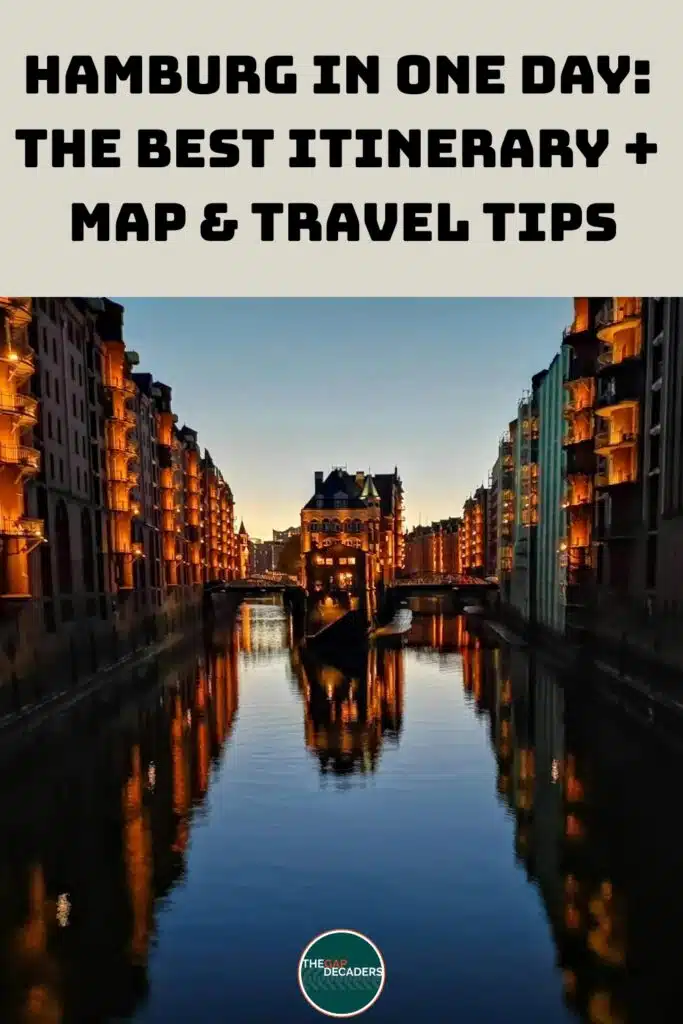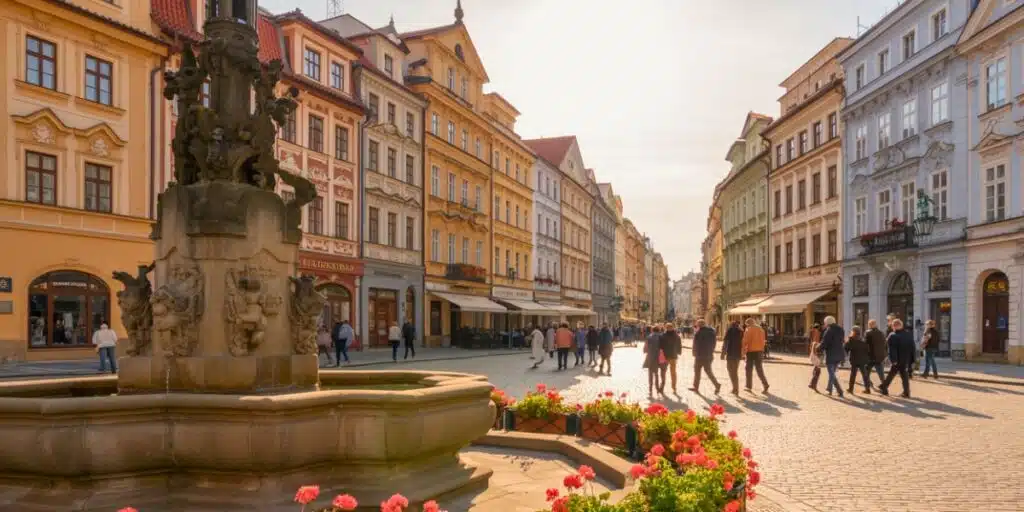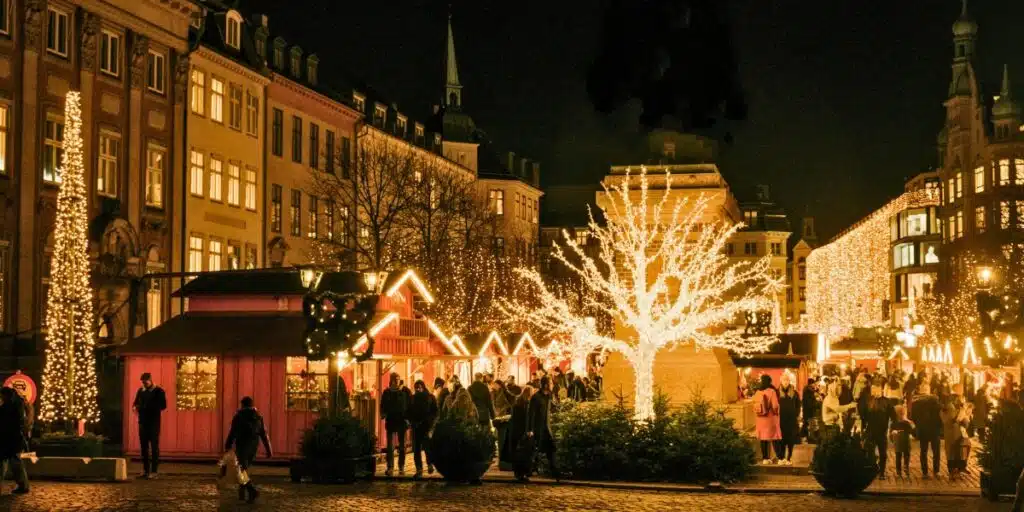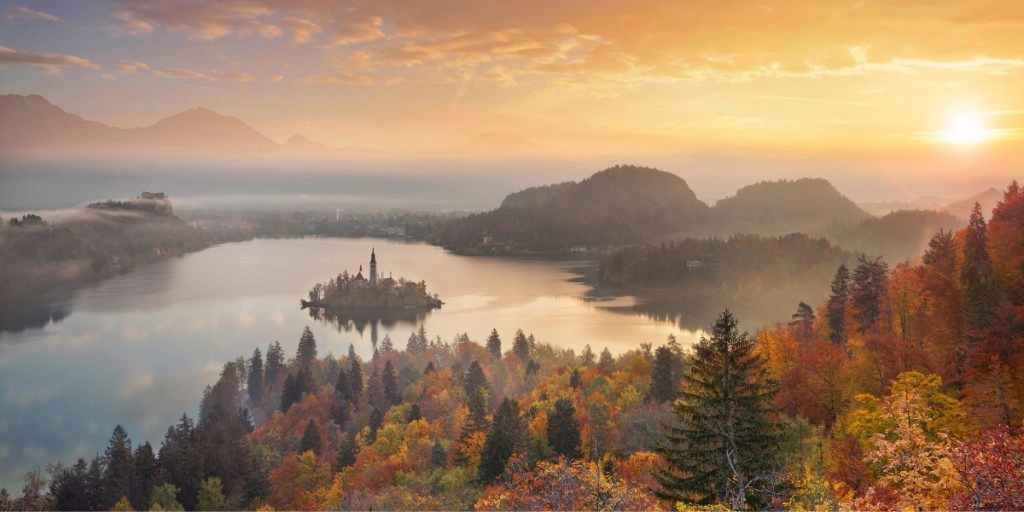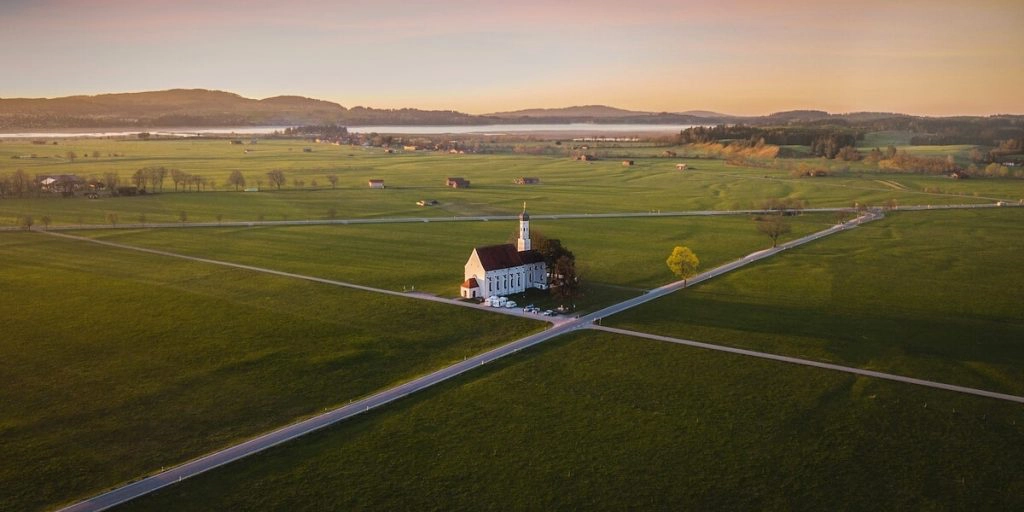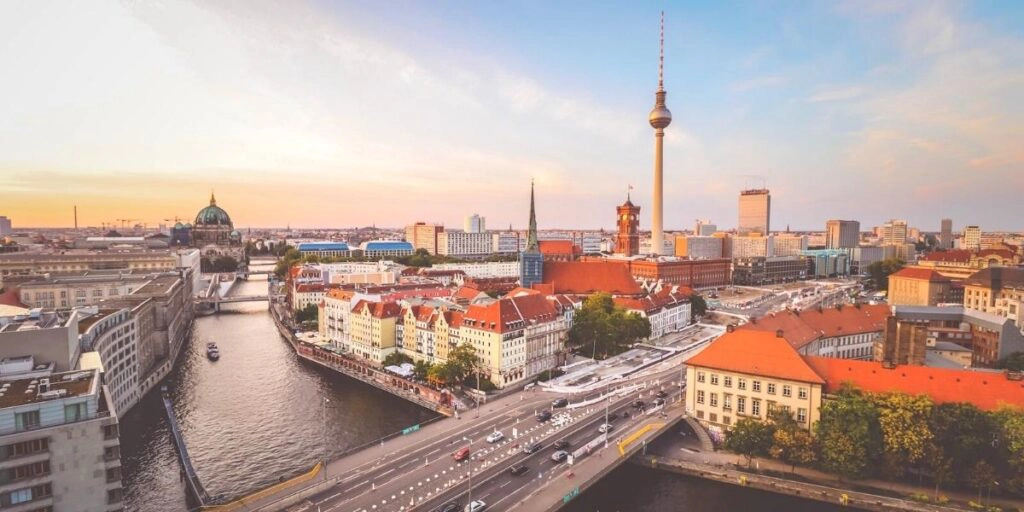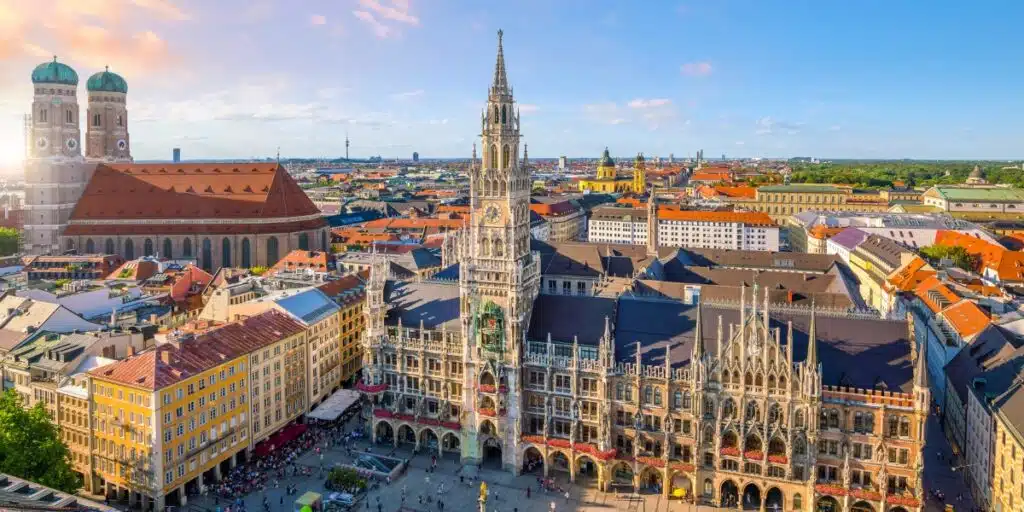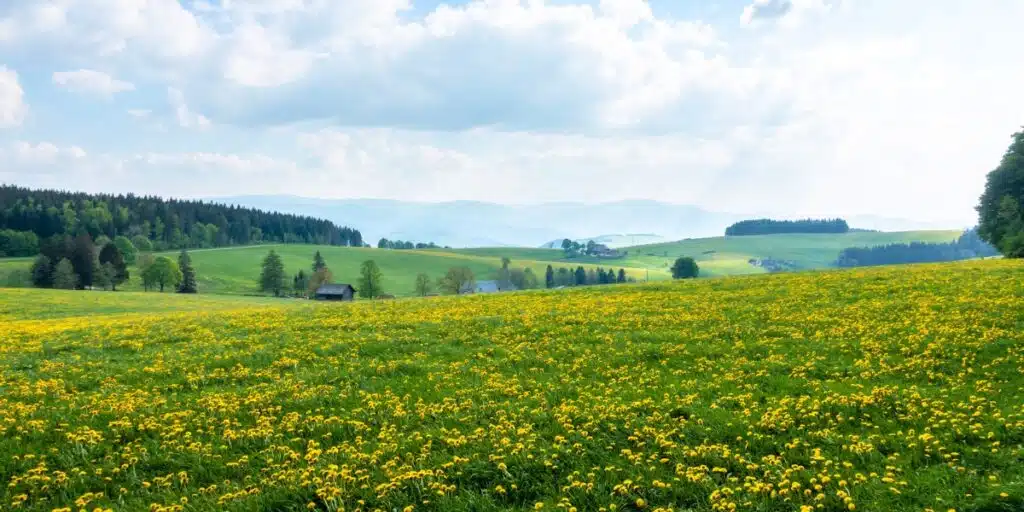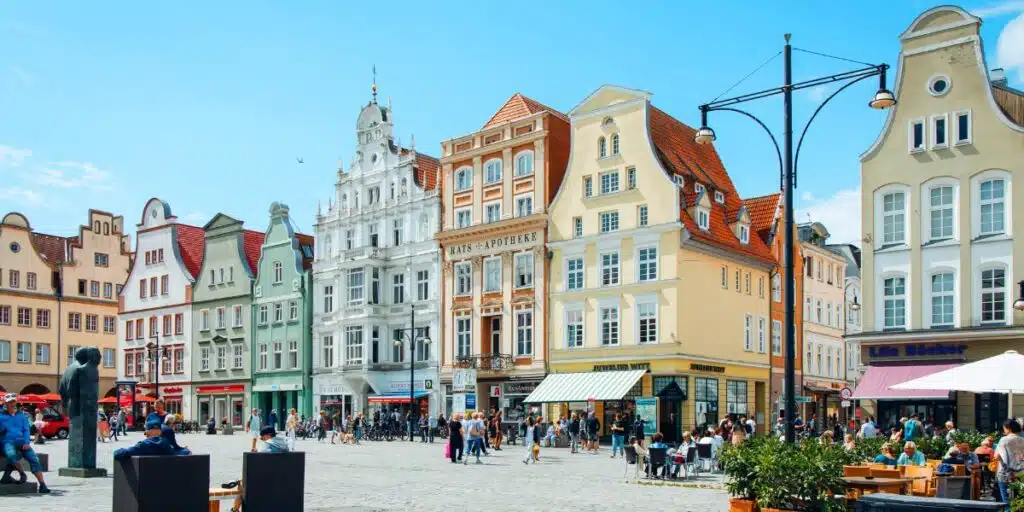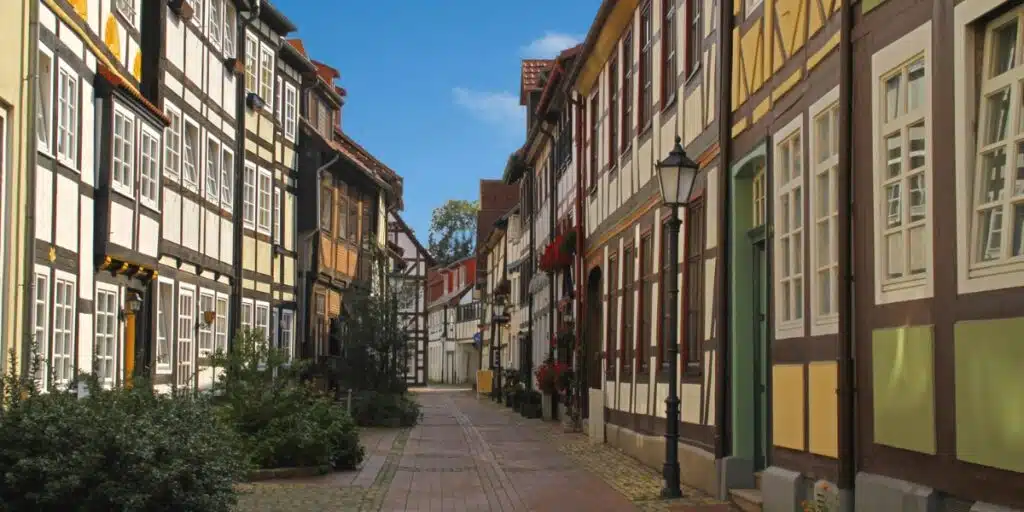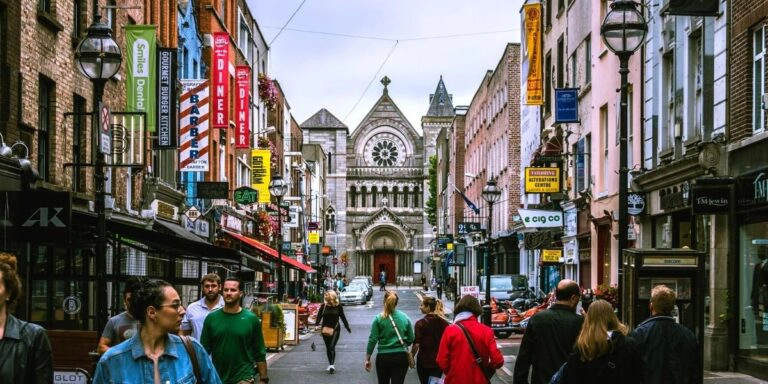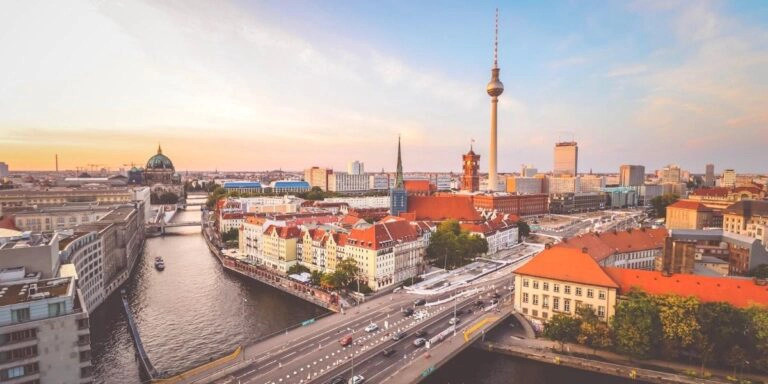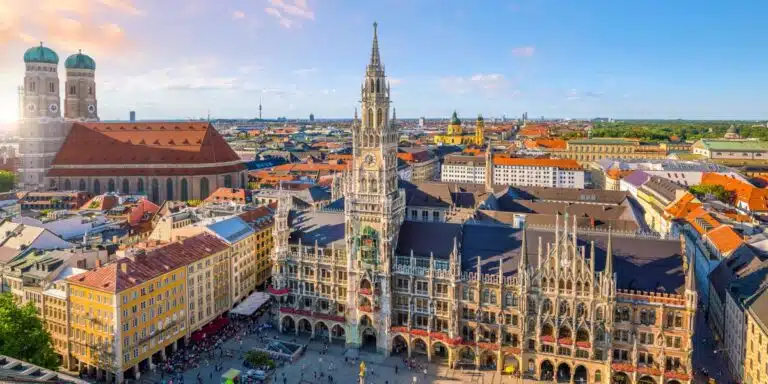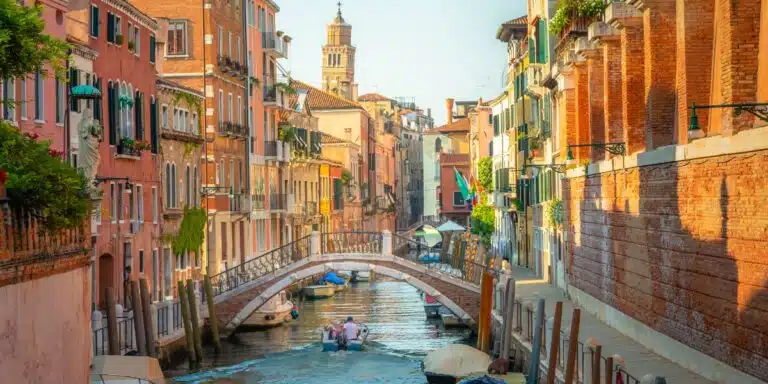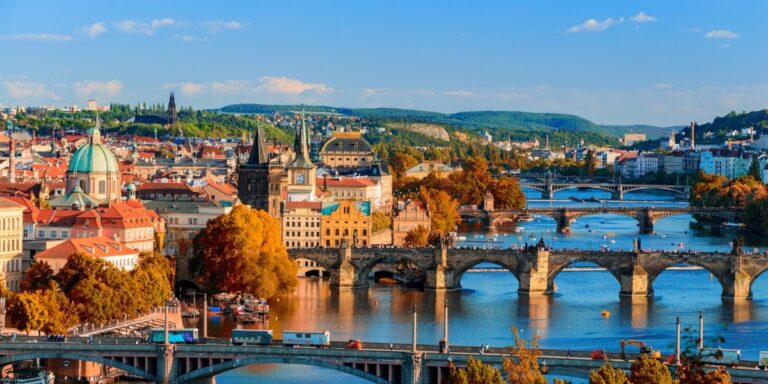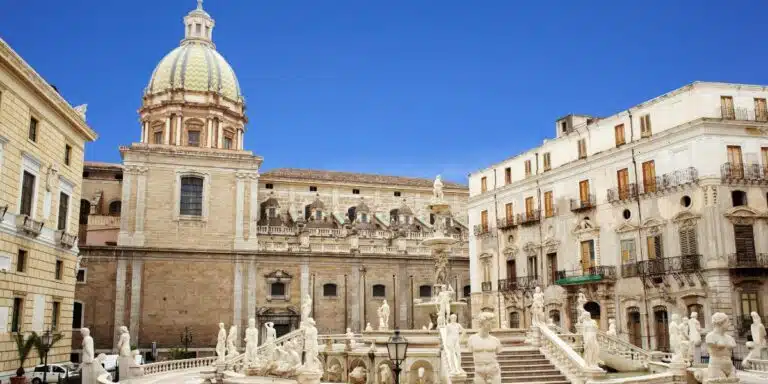This post may contain affiliate links, from which we earn an income. Click here to read our affiliate policy.
How to spend one perfect day in Hamburg
Hamburg is a modern and progressive port city with a fascinating history. The second city of Germany, Hamburg, is criss-crossed with canals and boasts more bridges than London, Venice, and Bruges combined.
The northern powerhouse of Germany, Hamburg oozes edgy culture, World War II history, and an extraordinary commercial past, providing visitors with a wealth of diverse options amongst architectural landmarks.
In this Hamburg one day travel guide, you’ll find a complete itinerary of all the most important attractions, with an interactive map organized to make the most of your time. We also share recommendations for central places to stay, ideas about where to eat local food, and tips about how to make the most of your day in Hamburg.
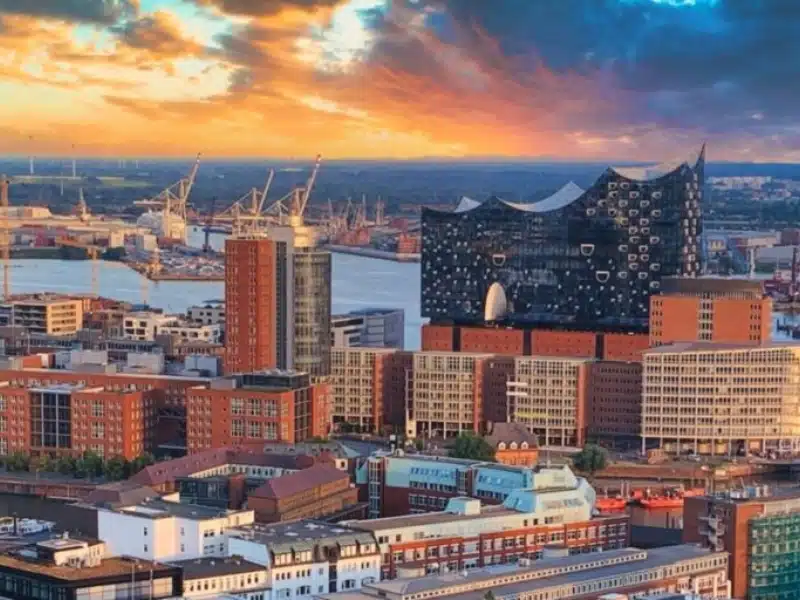
Are you planning your trip to Hamburg last minute?
Be sure to book your accommodation and tours in Hamburg ahead of time to ensure availability! Here are our top picks!
- Luxury: Tortue Hamburg (right in the centre and absolutely fab!)
- Mid-Range: The Henri Hotel Hamburg (perfectly located & our fave)
- Budget: Prizeotel Hamburg (bags of character at a great price)
- Hostel: Mac City Hostel (best hostel in town)
- For all the best things to see in the city, grab this Hamburg guided walking tour
- Book the Hamburg hop-on hop-off bus to see all the top attractions
- See Hamburg’s famous dock with an Elbe River tour
- Book this excellent walking tour to explore Speicherstadt & HafenCity
- Take a guided tour of the Reeperbahn and St Pauli for after-hours fun!
Things to See & Do in Hamburg
Interactive Map
ROUTE: Rathaus – Trostbruke – St Nikolai – Deichstrasse – Speicherstadt – HafenCity – Elbphilharmonie – St Pauli
How to use this map – Use your fingers (or computer mouse) to zoom in and out. Click or touch the icons to get more info about a place, and click the arrow in the box top left to open the index. To add to your own Google Maps account, click the star next to the title of the map.
Hamburg Itinerary Notes
Morning
Visit the Rathaus
Hamburg is a city state and is one of sixteen federal German states. The Rathaus, or town hall, is the seat of the government of Hamburg.
Constructed between 1886 and 1897, Hamburg town hall is a hulk of a building with a fantastic verdigris copper roof, ornate detailing, and statues along the frontage. This large and imposing building dominates the Rathausmarkt and Hamburg town center.
The Rathaus was constructed on 4,000 wooden poles drilled into the muddy shores of the Alster lake. Hamburg has a rich history of building on mud and marshland, which its neighbors, the Dutch, brought to Germany. The Dutch excelled at this building method.
TOP TIP: Take a tour of the Rathaus and learn about Hamburg and the fake document that gave it ‘free city’ status and allowed it to pay no trade taxes until 2003!
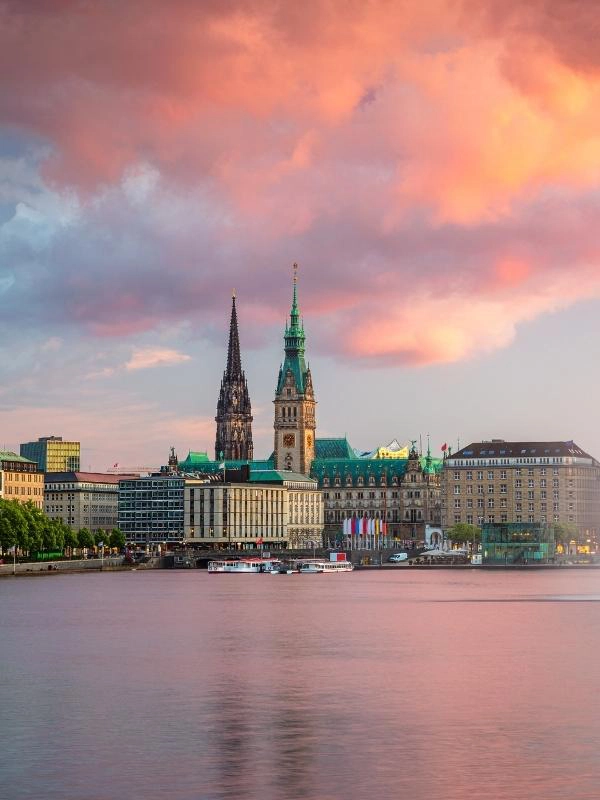
Look out for Stolpersteine
Stolpersteine, literally stumbling blocks, are sett-size (10x10cm) concrete cubes bearing a brass plate, inscribed with the names and life dates of victims of Nazi extermination or persecution.
Since 1992, artist Gunter Demnig has laid more than 70,000 such stones in 1,200 cities in 24 countries in Europe and Russia.
Seeing the stones and reading the inscriptions was an incredibly moving experience, knowing they had been laid outside the last known place of residence of the individual’s choice.
They shine up from the drab (and often wet; this is northern Europe) paths and pavements of the city, telling the story of the person they commemorate and making sure they, and the genocide of six million people, are not forgotten.
One particularly poignant grouping is the stolperstein laid outside the Patriotische Gesellschaft on Trostbrucke, an organization developed in 1765 for the good of Hamburg, epitomizing working together as a society – the exact opposite of Nazi doctrine.
Not everyone in Germany agrees with the concept of Stolpersteine. This excellent article in The Guardian explains why and shares more insight into the project.
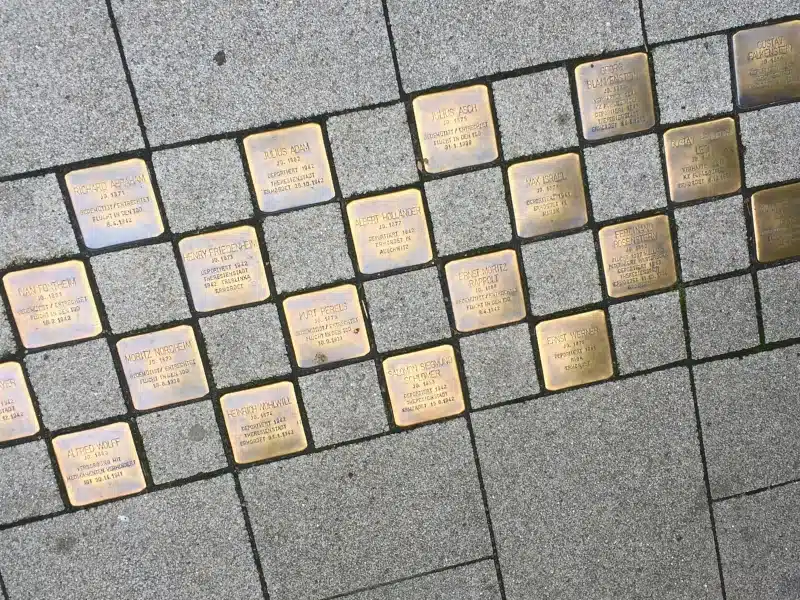
Visit the Memorial of St Nikolai
Destroyed in Allied bombing raids in 1943, this Gothic church is now a museum and observation deck. It was decided after the war to not return St Nikolai to a parish church as it had been before, but to create a memorial where Hamburg could remember their dead and the atrocities of the war.
The air raids were known as Gomorrah because the locals felt as though fire and brimstone were raining down from the sky. Over one week, the fatal combination of using high explosives and incendiary bombs resulted in unprecedented devastation.
First, blockbuster bombs were dropped, which cracked open houses, and then incendiaries containing phosphorus raised a firestorm, which at times reached an altitude of 6,000 meters (19,685 feet). The entire city turned into a volcano, a gigantic stack in which hurricane-like winds drew the hot air upwards, causing low pressure on the ground, which in turn sucked in oxygen, thus acting as an accelerant.
The air raids annihilated the city and left over 34,000 Hamburgers dead.
There are two very different modern sculptures by Edith Breckwoldt at this historic site. One predicts the struggle of Hamburgers to pull themselves back to humanity after the Allied bombings. In perfect irony, the other depicts a prisoner of war in despair.
The second sculpture, aptly called The Ordeal, is set atop a pile of bricks, representing the factory close to Hamburg where prisoners of war died in the production of bricks.
It was not realised until many years after rudimentary repairs were made to the remains of St Nikolai, that the bricks used were from the very factory where German citizens were detained and worked to death.
This is a deeply moving place where the lose-lose outcome of the war is palpable. St Nikolai really is one of Hamburg’s must-sees on your tour.
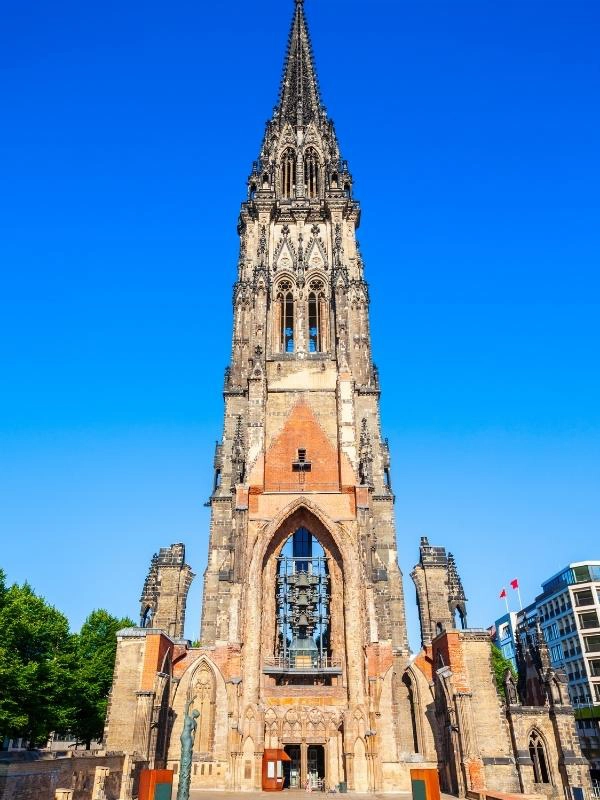
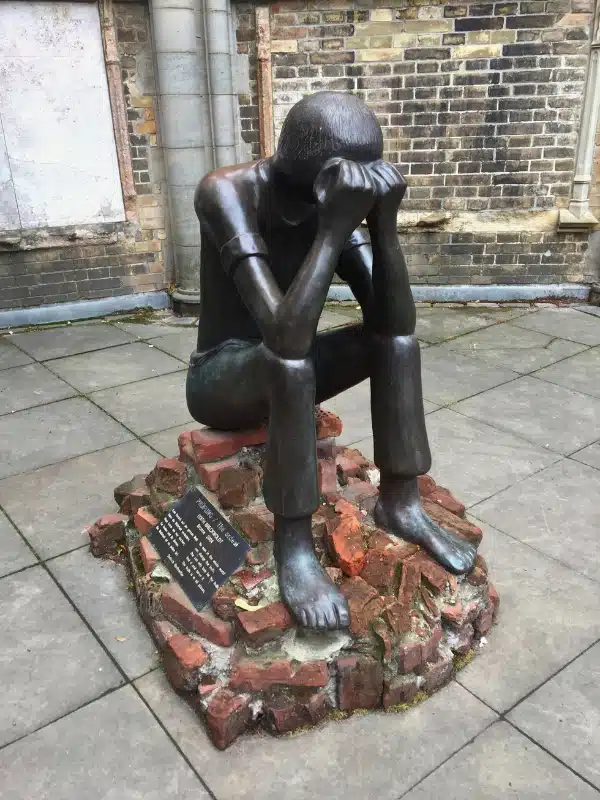
Visit Deichstraße
A fine example of Dutch building methods can be seen on Deichstrasse, in the Altstadt (old town), where some of the oldest houses in Hamburg drunkenly lean on their neighbors.
These houses built backing onto the Nikolaifleet canal (once a port), survived the great fire of 1842 and date back to the second half of the 17th century.
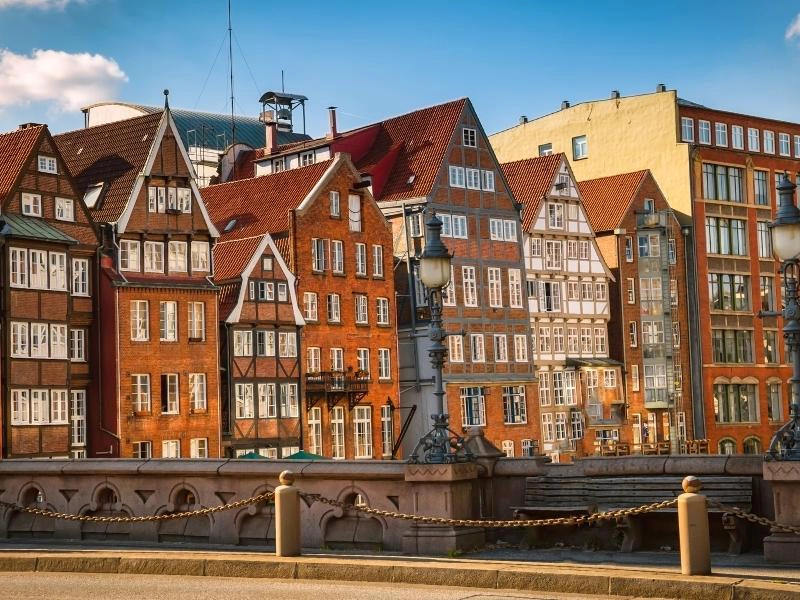
Afternoon
Wander Through Speicherstadt & HafenCity
In 2015, Hamburg’s 19th-century warehouse district (speicherstadt means city of warehouses) became a UNESCO World Heritage Site. One of Germany’s most famous landmarks, the area reminds visitors of the city’s rich Hanseatic history.
The entire district is built on thick oak piles, which create a warehouse complex of over 300,000 square meters (322,917 square feet), which stored goods shipped to Hamburg from the rest of the world.
Kaispeicher B is the oldest warehouse in the Speicherstadt. At eleven stories high and with an arresting gabled facade, it is a fitting home for the International Maritime Museum, where artifacts such as Admiral Nelson’s letters and Ernest Shackleton’s lifeboat are kept.
In close proximity, Europe’s first-ever office district emerged to manage the growing import and export market. Large red brick buildings with ornate facades in the style of early 20th-century brick expressionism characterize the Kontorhaus district between Steinstraße and Meßberg.
As you wander south from here, you will come to the historic dock area, which gradually became redundant due to the increase in the size of ships visiting the harbour city and is now the regenerated HafenCity. There are some interesting modern buildings here, and the old cranes remain in situ, a nod to the past.
The best way to explore this area of Hamburg and learn about it’s past is by taking this highly recommended guided walking tour where you’ll get to explore the iconic Fleetschlösschen the Wasserschloss and the world-famous Chilehouse.
TOP TIP: Hamburg is now in its fourth port iteration, from the tiny ‘drunk’ Dutch houses built on Nikolaifleet to the current vast (and growing) modern container port on the River Elbe.
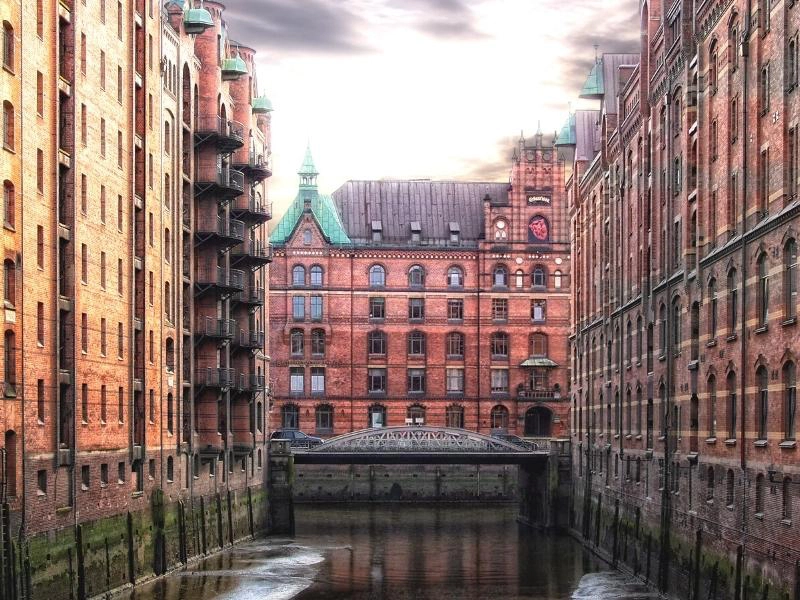
Visit the Elbphilharmonie
The Elbphilharmonie sits proudly shimmering on the banks of the Elbe River. This uber-modern landmark and concert hall has divided Hamburg, not only because of its striking architecture but also because of the cost and complete mismanagement of its construction.
Not only is Hamburg the second-richest city in Germany, but it is also the second-wealthiest. Wealthy cities are such because they manage their money well, so the shock and anger at the cost of building this landmark were felt far and wide.
With an original budget of €86m ($96m), a lengthy two-year row with the contractors, frequent changes of design and specification, and a total lack of oversight, the final cost was €886m ($987m). Yep, you read that right—10 times as much as the original, signed-off costs.
Hamburg was in uproar. Being a federal state of Germany, there was no money forthcoming from elsewhere, so Hamburger taxpayers had to absorb the additional costs, with a calculation of 150 years before the building paid for itself.
If you are a resident of Hamburg, you can attend special concerts played for the locals, which cost only €5 a ticket.
For the rest of us, grab a free ticket and go up to the observation deck, where you can admire this most expensive and controversial building while enjoying unrivaled views of the harbor and city skyline.
TOP TIP: It is totally free to enter the Elbphilharmonie and tour the building and observation decks. You are required to queue and get a ticket, but there is no requirement to pay for that ticket. Touts hang around the entrance trying to sell tickets to unsuspecting tourists, don’t get sucked in.
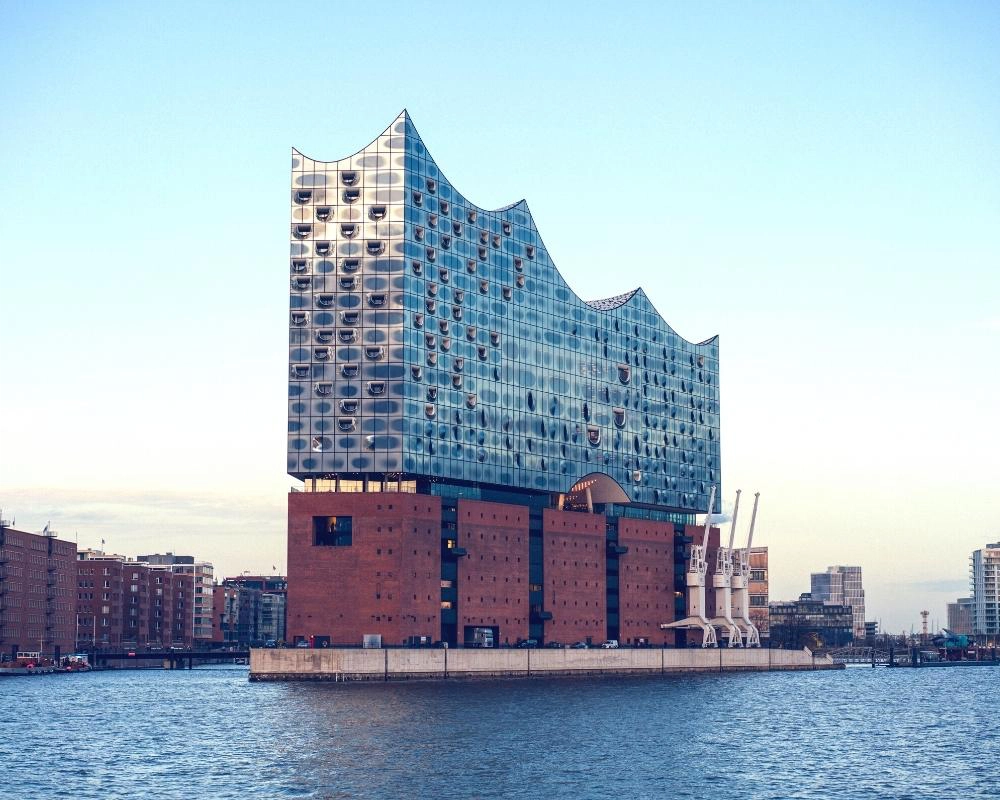
Take a Boat Trip
Hamburg is the biggest seaport in Germany and has one of the largest harbours in the world. Their maritime trading past is the bedrock on which Hamburg has grown and developed over the centuries, and no trip Hamburg is complete without a foray onto the water.
There are a number of boat trips available. You can cruise the Alster Lake on a sailing cutter at sunset or take a canal tour in the warehouse district. We think the best river trip is on the Elbe River for a tour of the docks, to marvel at the enormous cargo ships carrying 10,000 containers, and to see the historic sailing ships at permanent harbor.
You’ll have by far the best view of the Elbphilharmonie from the harbor too.
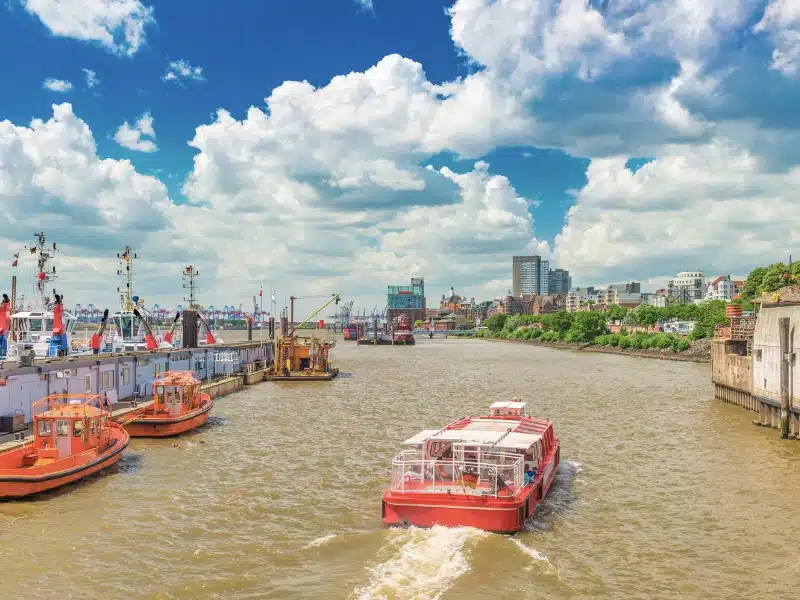
Evening
Party in St Pauli
St Pauli, just east of the centre and meandering to the Elbe, is down to earth and a bit rough around the edges, but thrums with live music, street art, energy and life.
Its most infamous street, the Reeperbahn, with its sex shops, window-displayed prostitutes, and strip clubs, is an eye-opener to the uninitiated. Visit the famous red light district of Hamburg at night, when the area wakes up and shows its best side.
This is also the part of Hamburg connected with The Beatles, three of whom played here in the early 60s. A guided tour of the Reeperbahn and St Pauli is the best way to see all the important bits of this loud, gritty, and occasionally kitschy district.
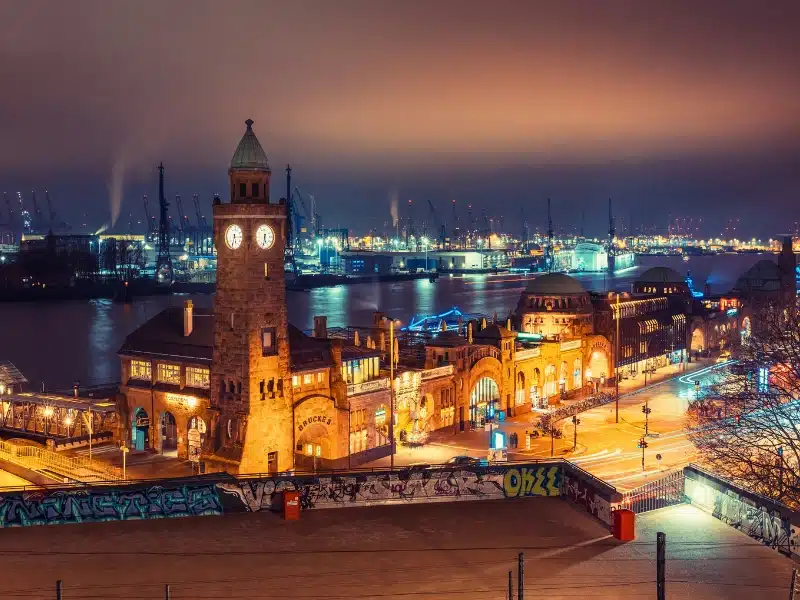
German Travel Ideas
Where to Eat in Hamburg
Grab a Traditional Lunch
For lunch in Hamburg, one of the the top things to eat is a fischbrötchen (fish roll). You are, after all, in a sea city famous for fish. The humble fischbrotchen is a simple snack, typically made with pickled herring, onion, pickles, and Remoulade sauce.
However, in modern-day Hamburg, there are many options. You can choose which fish, how it’s prepared, the type of roll, and so on. Don’t pay more or less than €6-8; you will either be ripped off or served a fischbrotchen of dubious quality.
These are our favorite places for Hamburg’s most traditional lunch:
Goedekens Kombüse
On the doorstep of Hamburg’s fish market, Goedeken’s Kombuse serves fresh and delicious fish sandwiches every day but Sunday. Try one, and you’ll understand why they have been voted the best fish sandwiches in the city several times!
Brücke 10
This is the place to go if you’re visiting Hamburg on Sunday – yes, they are open every day! With a fantastic view of Hamburg harbour, the small bistro Brucke 10 serves one of the best crispy fresh fish rolls (with a beer) you’ll ever try.
Fisch & Co
Fisch & Co is a small bistro in Hamburg’s altstadt. They not only serve a mean fischbrotchen but also classic German dishes like currywurst (curried sausage) or labskaus, all at really reasonable prices. It’s a bonus that they’re open on Sundays, too.
Deichgraf
Just along from the wonky houses backing onto Nikolaifleet is the Deichgraf restaurant. Serving a variety of Hamburg specialities, the restaurant is best know for its labskaus, a tasty meat, fish and potato stew common in the region.
With a traditionally decorated restaurant and long street side tables, this is a great place to sample local produce sourced from the region.
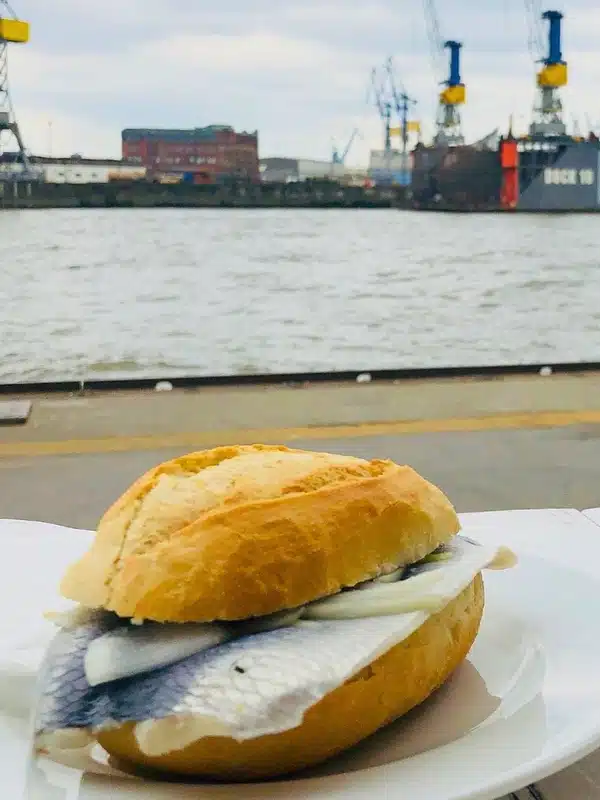
Top Five Hamburg Travel Tips
More Than One Day in Hamburg?
Are you looking for a two day Hamburg itinerary, or do you have another half a day to spend in Hamburg? We recommend adding these attractions to your itinerary:
Planten un Blomen
Planten un Blomen is one of Europe’s top urban parks, with 47 hectares of gardens, ponds, greenhouses and botanical plantations of verdant space.
Head for the old Botanical Garden, which was planted on the site of the city wall in 1821 and has glasshouses with plants from Mediterranean climes including laurels, olive trees, palms and eucalyptus.
From May to October, you can watch the famous water light concert at 10pm every evening. The water fountains are illuminated in sync with music, creating an incredible show against the dark night sky.
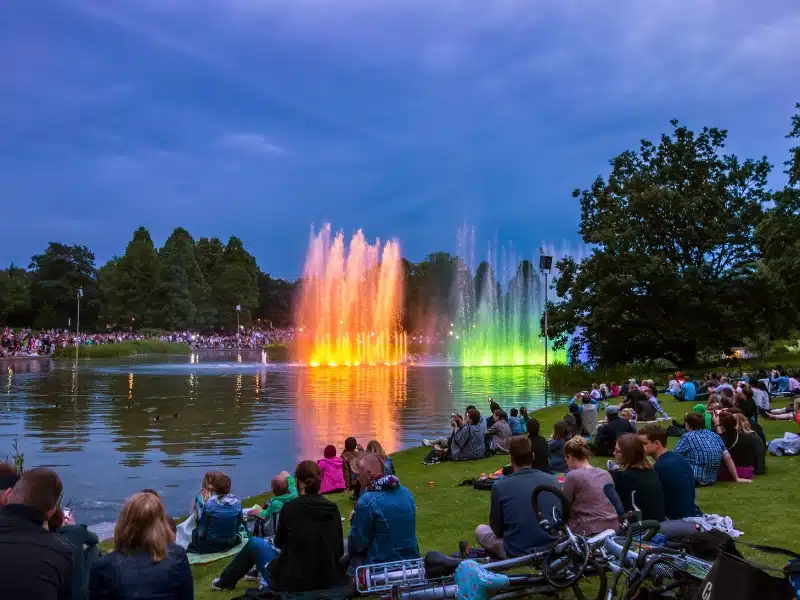
Hamburger Kunsthalle
Visit the Hamburger Kunsthalle, one of the richest art museums in Germany. With art from Rembrandt, Gauguin, Goya, Rubens, Klee, Picasso and Canaletto, there’s something here for everyone.
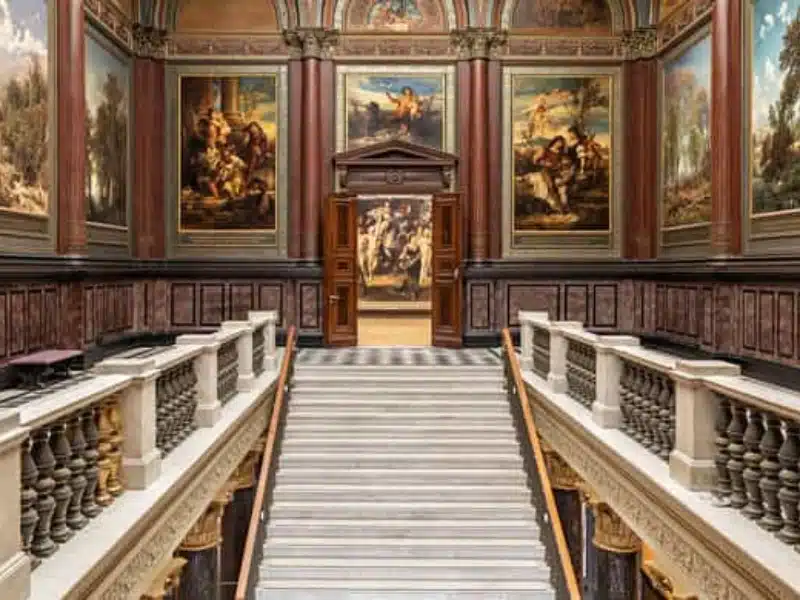
Old Elbe Tunnel
Walk under the Elbe, using the old Elbe Tunnel. Opened in 1911 and 24m below the river, the tunnel transformed the lives of Hamburg’s harbor workers commuting from the left to the right bank.
The northern entrance is at Landungsbrucken, which is evident because of its bright green dome. If you go on foot, take your time and enjoy the Jugendstil architecture (a type of Art Nouveau architecture that emerged in the late 19th and early 20th centuries), vintage signage, and maritime motifs.
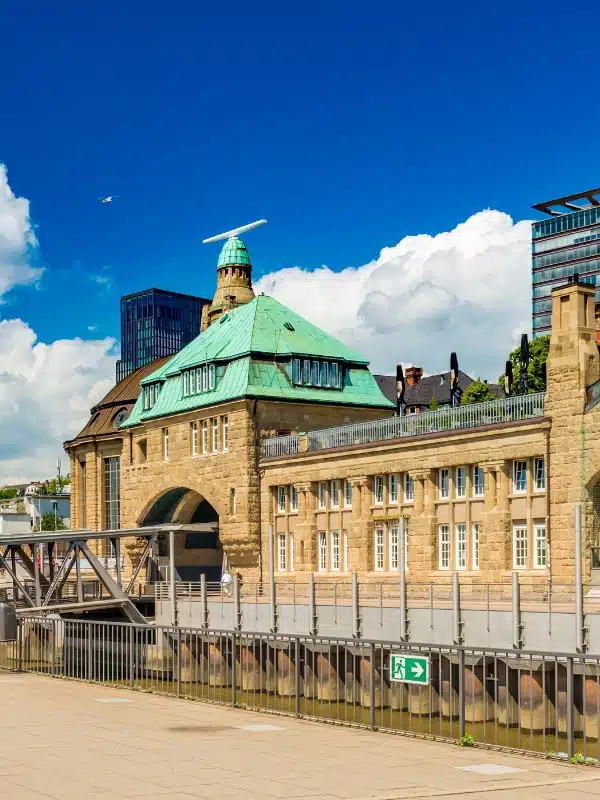
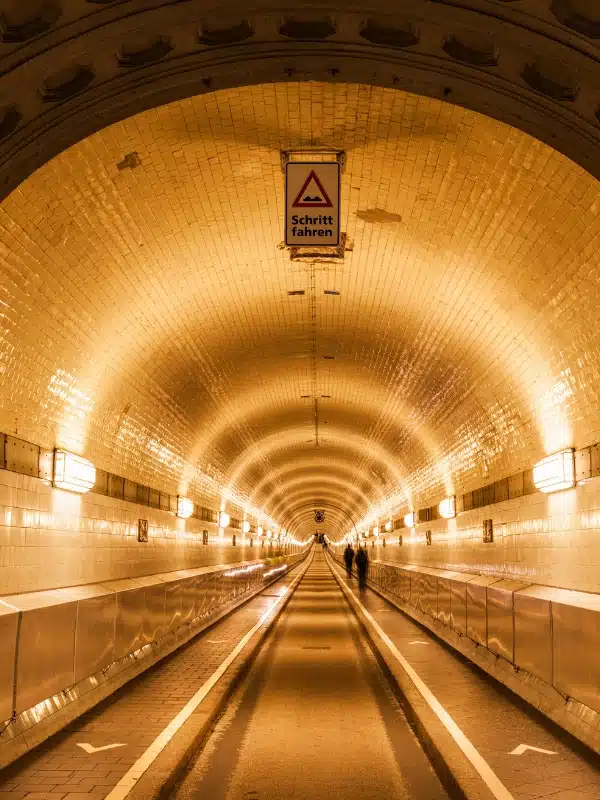
Hamburg Practicalities
When to Visit Hamburg
The best time to plan your Hamburg trip is from May to September when northern Germany reaches balmy temperatures of 70°c.
Hamburg in summer is delightful, but it’s also the northern hemisphere’s high season, so expect accommodation and travel rates to be up there.
Early spring and late autumn can also be good times to visit, when costs are lower. The weather may be a little more unpredictable, and it could also be quite cold or wet, requiring coats and boots.
Visit Hamburg in winter for Christmas markets and possibly snow, lending a typically Germanic feel to the city.
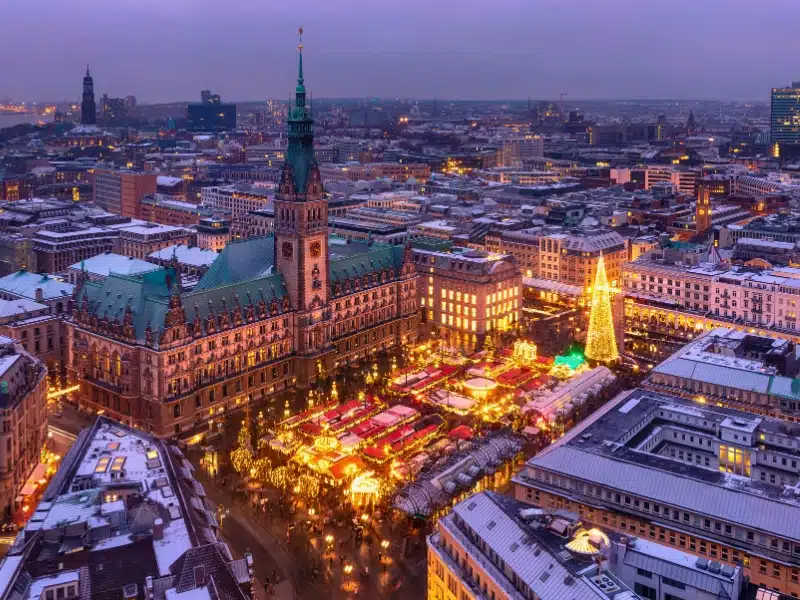
Getting to Hamburg
If you’re flying in, Hamburg Helmut Schmidt Airport is around 8.5km from the city center. You have several options to get into downtown Hamburg:
Are you visiting Hamburg as part of a longer trip? A German road trip is the best way see this unexpectedly beautiful country, and our guide to road tripping in Germany has all you need, including maps, routes, highlights and tips, to help you plan the perfect trip.
Where to Stay in Hamburg
Luxury: The Tortue Hamburg combines elegance, history, and modern design, offering guests a unique atmosphere with lavish decor, exceptional service, and fine dining options. It’s located in the heart of Hamburg, close to cultural landmarks, making it a prime destination for travelers seeking luxury and a taste of the city’s rich history.
Mid-Range: The Henri Hotel Hamburg is a stylish boutique hotel located in the center of Hamburg, near the historic Old Town and main shopping streets like Mönckebergstraße. Known for its retro-chic, 1950s-inspired design, the hotel blends modern comfort with vintage charm, offering guests a unique and cozy atmosphere.
Budget: Prizeotel Hamburg is a trendy, budget-friendly design hotel known for its modern, vibrant interior, created by the renowned New York designer Karim Rashid. It’s ideal for travelers looking for stylish yet affordable accommodations.
Hostel: Mac City Hostel is a budget-friendly hostel located in central Hamburg. It offers affordable accommodation with a focus on simplicity and convenience. It’s particularly popular among backpackers, solo travelers, and budget-conscious visitors looking for a central location close to public transport.
Are you looking for more one day city itineraries? Check out these top posts…
One Day in Dublin: Best Itinerary, Map, Tips & Guide
Berlin in One Day: Best Itinerary, Map, Tips & Guide
One Day in Munich: The Best Itinerary + Map, Tips & Guide
One Day in Venice: Best Itinerary, Map, Tips & Guide
The Best Prague One Day Itinerary + Map, Tips & Guide
One Day in Palermo: Best Itinerary, Map, Tips & Guide
Love it? Pin it!
